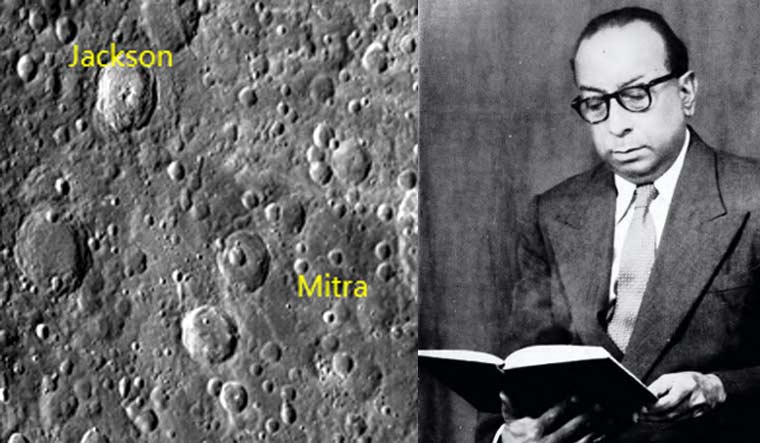
For years until his death, Sisir Kumar Mitra yearned to grow the study of space in his home country. The Bengali physicist, who pioneered the study of the ionosphere and the use of radio electronics in India, was honoured 53 years after his death when ISRO's Chandrayaan orbiter took a photograph of the crater on the moon that was named after the scientist from Calcutta.
ISRO has released the second set of images from its Chandrayaan 2 mission, where the orbiter’s “Terrain Mapping Camera 2” (TMC-2) photographed impact craters on the moon’s Northern hemisphere on the side of the moon facing away from the earth, one of which was named after the renowned Bengali physicist, Sisir Kumar Mitra.
According to ISRO’s website, the Mitra crater, 92 km in diameter, “is named after Prof. Sisir Kumar Mitra, who was an Indian physicist and Padma Bhushan recipient known for his pioneering work in the field of ionosphere and Radiophysics.”
His interest in atmospheric science began in 1899 when he was between the age of six and seven, when Ram Chandra Chatterjee ascended to the height of a few hundred feet with a balloon. Mitra pursued scientific study despite financial hardships, eventually working under the likes of Charles Fabry and Marie Curie during his stint in France.
Mitra returned to India, and notably pioneered research into ‘wireless’ radiowaves in the country, starting the first post-graduate programme in the same at Calcultta University.
As a member of the “Radio Club”, Mitra was among the few to work on transmitters with an amateur radio programme in India — years before the Indian Broadcasting Company (All India Radio’s precursor) begun operations.
At the Wireless Laboratory he had set up, Mitra developed his research on measuring the ionosphere, the electrically-charged regions of the earth’s atmosphere that extends between 60 to 500 km above the earth’s surface. He formulated one of the first scientific explanations for the origin of the “E-layer” of the ionosphere, later explaining why the night sky was dusty instead of pitch black (due to luminescence in the F-layer of the ionosphere).
Mitra helped build up radio-electronics research in India, training the first batch of students in the subject of wireless research. He studied the upper layers of the atmosphere long before the Indian scientific community were able to send rockets up into space to explore the region themselves. His 1947 book The Upper Atmosphere was considered a “classic on upper atmospheric and ionospheric physics” and sold out 2,000 copies within three years of being published. It was the most comprehensive volume and review of literature on the subject at the time.
The second edition of The Upper Atmosphere was translated into Russian within two years of publication. According to the Indian Academy of Sciences (and a former discipline of Mitra's), when Soviet space scientists were preparing for Sputnik I’s launch, they turned to his book to model the lifetime of a satellite and calculate the drag of the satellite that would launch the Space Age.
Mitra died in 1963, just as the Space Age was kicking off around the world. The crater within the moon’s Dirichlet-Jackson Basin was named after him in 1970.
The Orbiter also photographers the craters Somerfeld, Kirkwood, Jackson, Mach, Korolev, Plaskett, Rozhdestvenskiy and Hermite.
On September 2, Chandrayaan's Orbiter is expected to detach from the lander, with the plan to attempt a soft landing on September 7.
ISRO’s Chandrayaan releases image of crater named after Bengali physicist
![ISRO’s Chandrayaan releases image of crater named after Bengali physicist]() Reviewed by audrinadaniels
on
August 26, 2019
Rating:
Reviewed by audrinadaniels
on
August 26, 2019
Rating:


No comments: